Northern Vietnam
Hanoi Captital
Mai Chau
For history and culture lovers, Dong Van is a destination not to be missed in Ha Giang. This place is well-known for its striking mountains and hills, alongside the incredibly lively markets that serve as bustling cultural centers for the ethnic people.
Located in the North of Ha Giang Province, Dong Van District is the northernmost point of Vietnam, often considered the heart of the Ha Giang Loop by adventure enthusiasts. It’s here that the province’s most iconic and breathtaking landmarks are concentrated.
Coming to Dong Van, visitors are met by the endless stone plateau, with undulating mountain ranges stretching out to the horizon, creating a landscape so exquisitely vivid that you’ll wish you could frame every view.
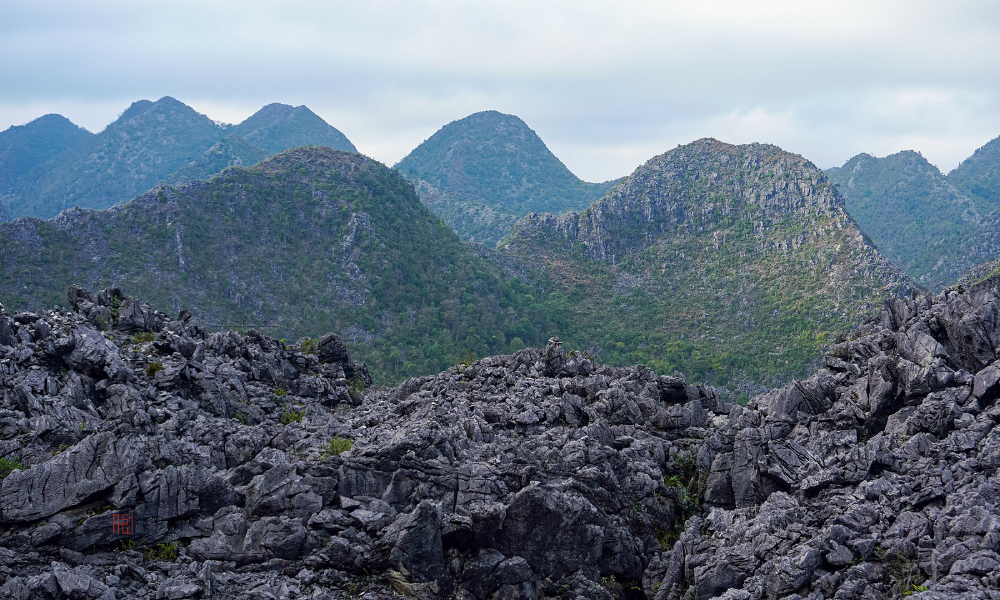
Beyond nature, Dong Van is the ideal destination for cultural and historical exploration, featuring ancient relics tied to interesting tales and vibrant ethnic minority villages with unique customs and traditions.
Within Dong Van District are two main towns, Dong Van and Pho Bang, alongside 17 small communes. This region is home to 17 different ethnic minorities of Vietnam, such as the Mong, Tay, Dao, Nung, and more. Each group maintains its unique lifestyle and culture, yet they coexist harmoniously under the common roof of Dong Van, earning this place the moniker “the intersection of cultural colors.”
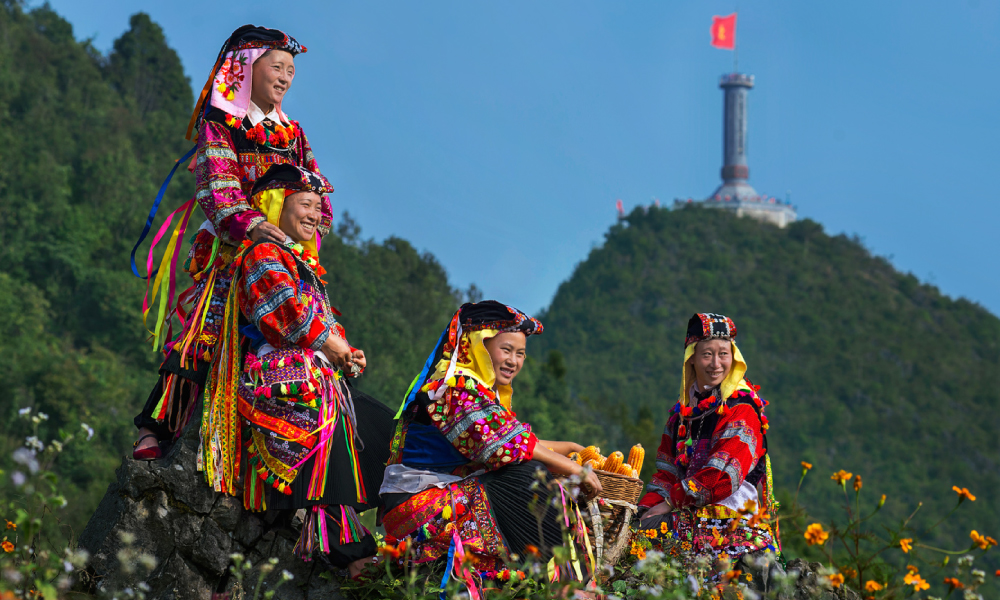
With a complex, rocky terrain spanning 500 square kilometers, the motorbike ride on Happiness Road (National Highway 4C) from Ha Giang to Dong Van is a thrilling challenge. Visitors here will have to follow the steep and winding trails on high cliffs, with one side being a deep abyss plunging into the valley below.
This scene, while somewhat scary, is equally impressive, adding an exhilarating new dimension to your journey.
As Vietnam’s northernmost district, located about 150 kilometers from the heart of Ha Giang City, the journey to Dong Van isn’t short or always easy.
Fortunately, tourism development has led Ha Giang province to invest in its road system. National Highway 4C now directly connects Ha Giang City to Dong Van District, passing through Meo Vac. This means you can travel to Dong Van by motorbike or car along this route.
Once in Dong Van town, you can rent a motorbike for around 100,000 VND per day to explore the surrounding areas at your leisure.
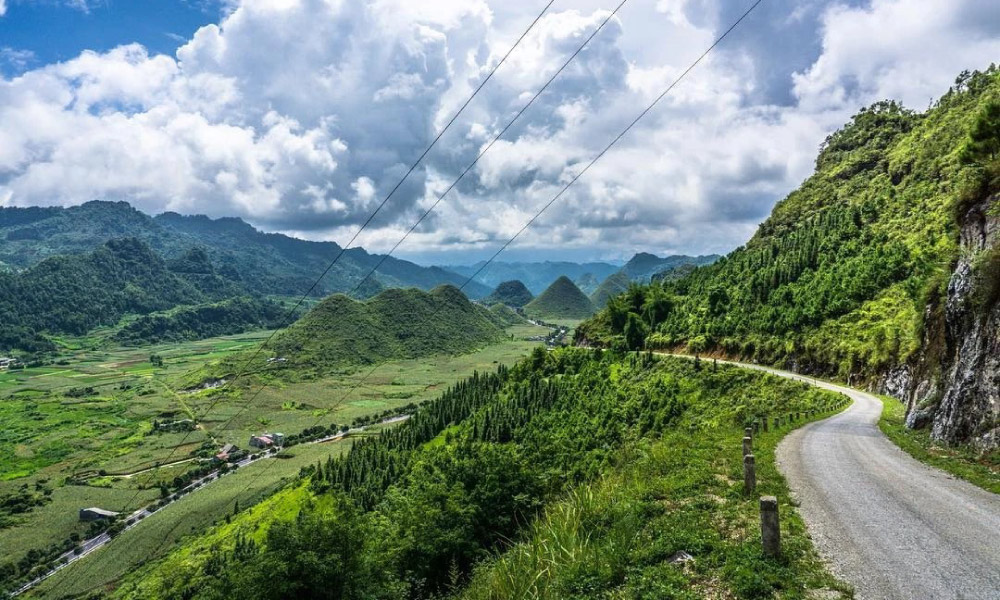
For those less familiar with mountainous terrain, booking a Ha Giang Loop tour with Fola Travel is an excellent choice. Instead of worrying about renting a car, booking accommodation, or navigating challenging roads safely, you can simply relax and let Fola Travel handle everything. Our all-inclusive tour packages ensure you’ll visit Ha Giang’s most beautiful places, such as Dong Van, Quan Ba, and Meo Vac, in the most comfortable and convenient way possible.
See more: The best Ha Giang Loop tours and packages.
Located at an altitude of 1700 meters above sea level, Dong Van has a distinct continental monsoon climate. The average annual temperature here is about 20 degrees, the coldest can drop below zero, while the hottest reaches nearly 40 degrees. Visitors to Dong Van should carefully check the weather forecast before the trip for a comfortable experience.
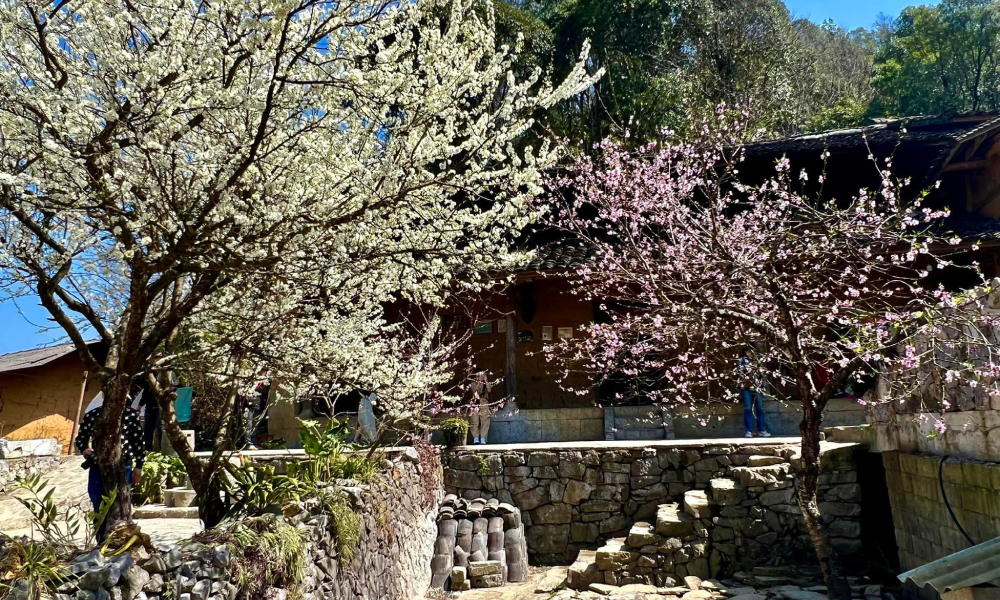
Travelers to the Ha Giang Loop during summer and autumn (May to October) should be extra cautious, as the heavy rainfall can make mountain roads difficult to navigate. Nevertheless, Dong Van District offers such a wealth of beautiful attractions that no matter when you visit, we are certain you will have an enjoyable journey.
The Dong Van Stone Plateau, a special Ha Giang landmark stretching across four districts of Quan Ba, Yen Minh, Meo Vac, and Dong Van, was recognized by UNESCO as a global geopark in 2010.
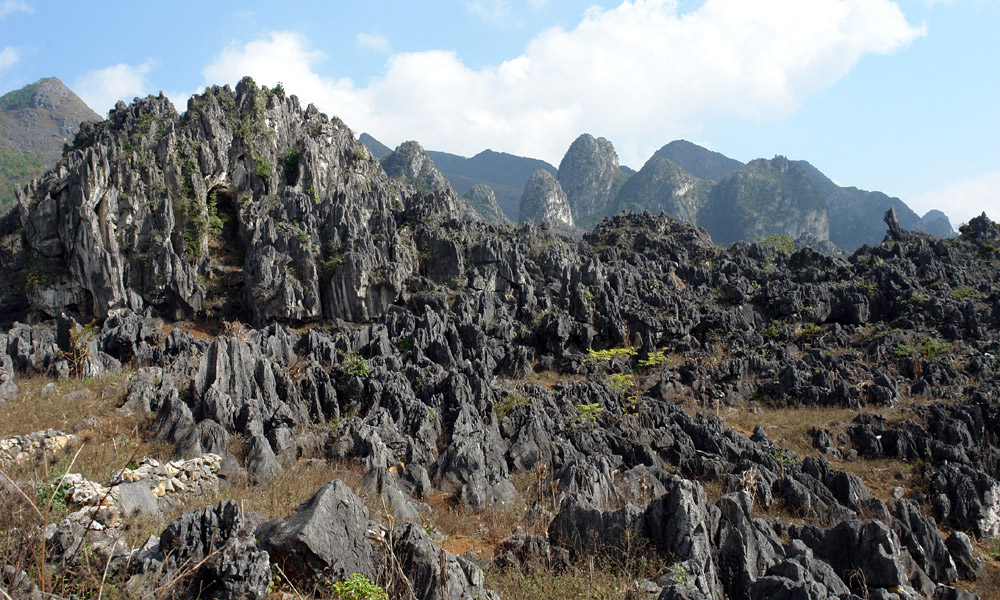
This plateau is a remarkable limestone area, bearing countless imprints of the Earth’s crustal development. The unique landscape here leaves a strong impression on Ha Giang tourists: vast expanses of distinctive silver-gray rocks, beautifully decorated by vibrant green corn fields cultivated by ethnic locals.
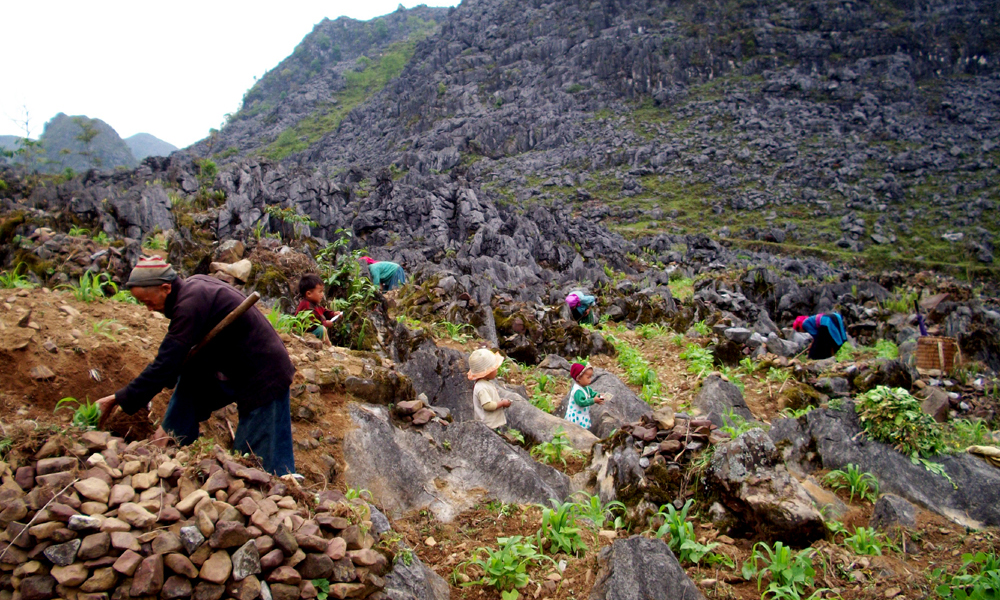
The wildness of Dong Van Karst Geopark blends seamlessly with the warmth and friendliness of its people, creating an utterly impressive scene that you simply cannot look away from.
The heart of Dong Van District, Dong Van Ancient Town nestled in the core of the stone plateau. Formed over 100 years ago, this town exudes a classic, gentle beauty, characterized by its traditional tiled roofs and charming stone-paved roads, like a living picture bearing the mark of time and the identity of the highlands.
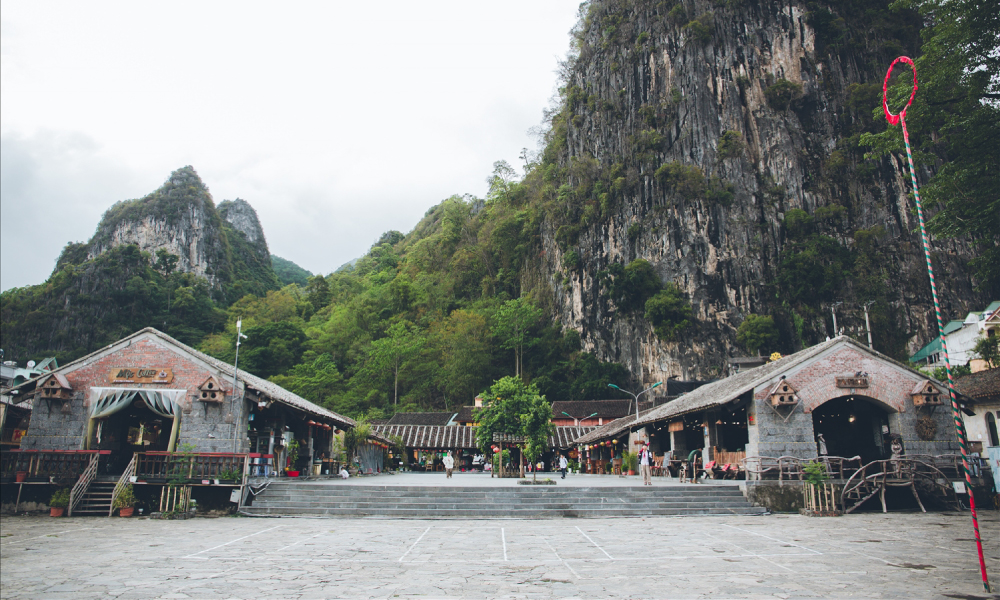
A visit to Dong Van Ancient Town invites you to experience the simple rhythms of local life: observe the diligent farming by day, then immerse yourself in the lively buzz of Dong Van market, where people gather to trade goods and stories.
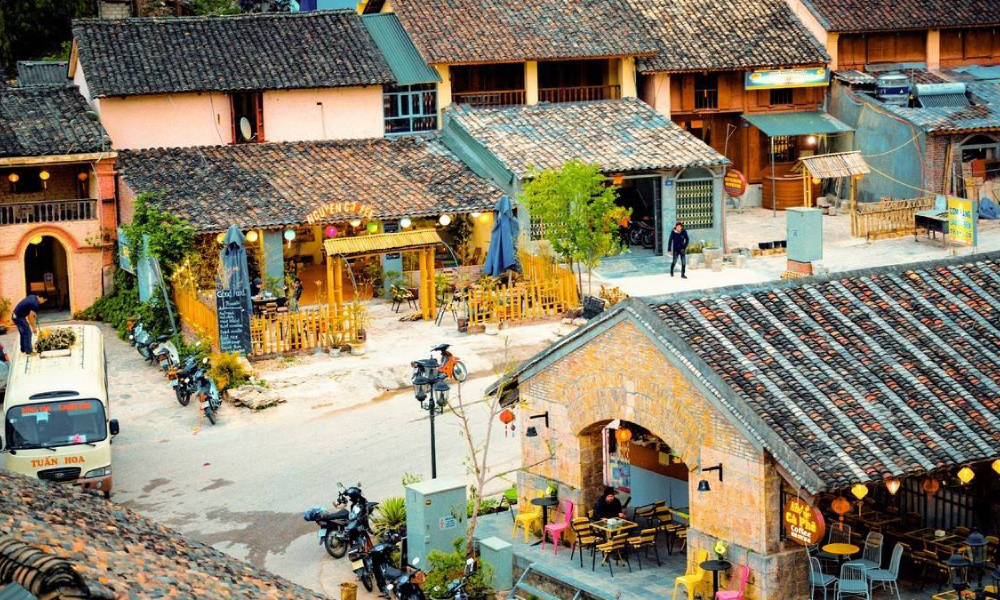
Dong Van Market is an absolute must-see, where you can feel the brilliant beauty of highland culture, from the colorful brocade of young women to the cheerful music that animates the air. Visitors also have the chance to try unique specialties or buy handmade souvenirs to keep beautiful memories of their trip to Ha Giang.
Tham Ma Pass is a section of National Highway 4C, connecting the center of Yen Minh District with Pho Cao Town of Dong Van. This impressive slope is known as the most dangerous routes in Northern Vietnam, with 9 winding bends stretching 5 kilometers. Conquering Tham Ma Pass is the dream of many adventurous drivers, yet it’s a feat not everyone is capable of achieving.
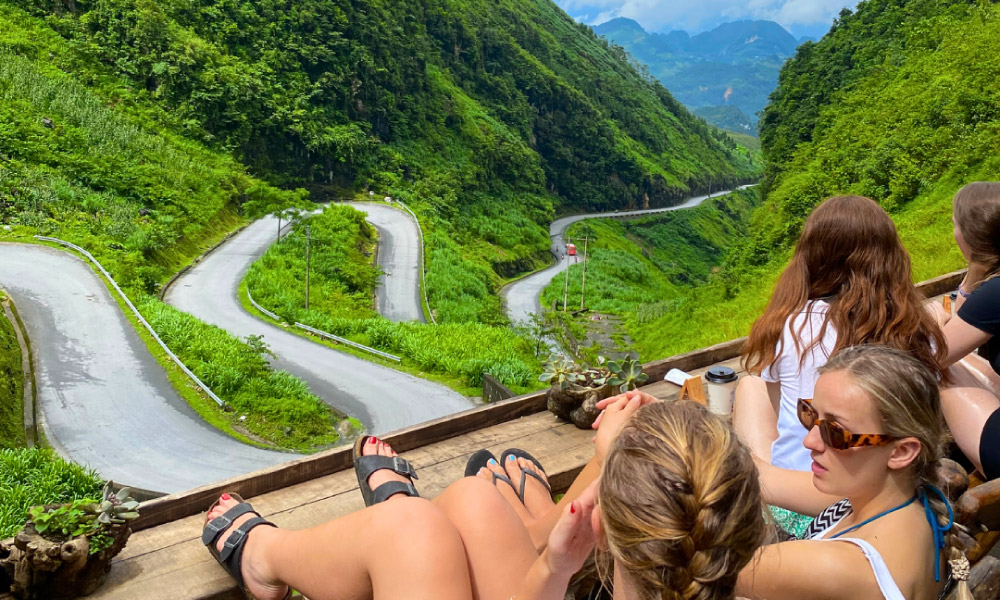
Beyond the thrill, Tham Ma Pass is a highly popular photography spot, drawing countless tourists eager to capture its iconic image: a road winding like a snake, threading its way beneath the majestic mountains and forests of Ha Giang.
Vuong’s Palace was the residence of the Mong King Vuong Duc Chinh, built in the early 1900s. This impressive site is a short 13 kilometers drive from Dong Van Town center, a perfect stop for anyone who appreciates historical architecture.
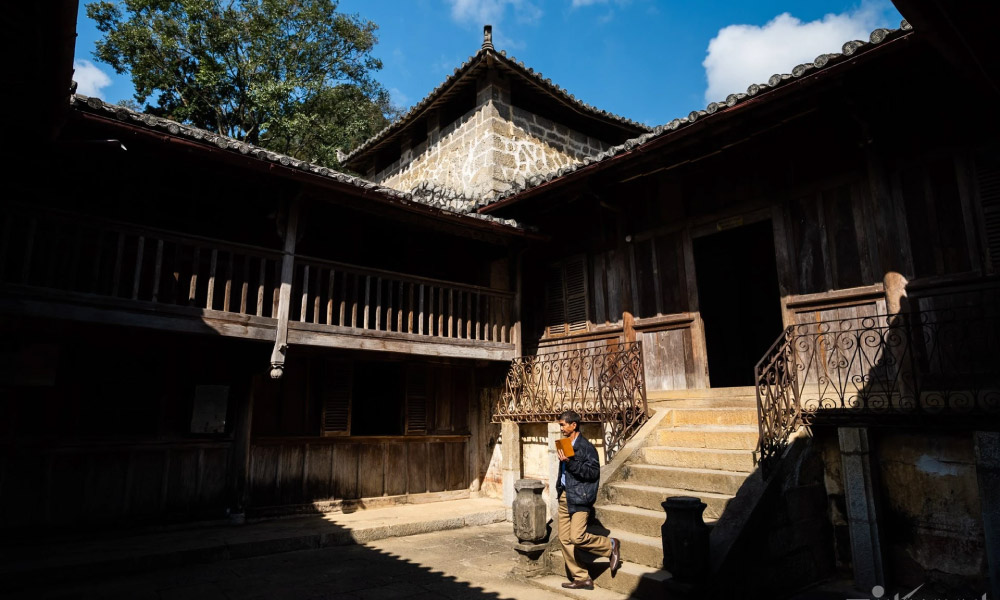
Occupying over 1,000 square meters, the Mong King Palace is uniquely laid out in a turtle shape, featuring three stilt houses. Every detail in this place, from the pillars and beams to the very floors, walls, and roofs, is made from precious hardwoods, lending it a timeless beauty.
In 1993, the Vuong’s Palace was recognized as a national architectural and artistic relic.
Nho Que River is one of the most beautiful rivers in Northern Vietnam, flowing through Meo Vac and Dong Van Districts of Ha Giang Province, eventually joining the Gam River in Cao Bang Province.
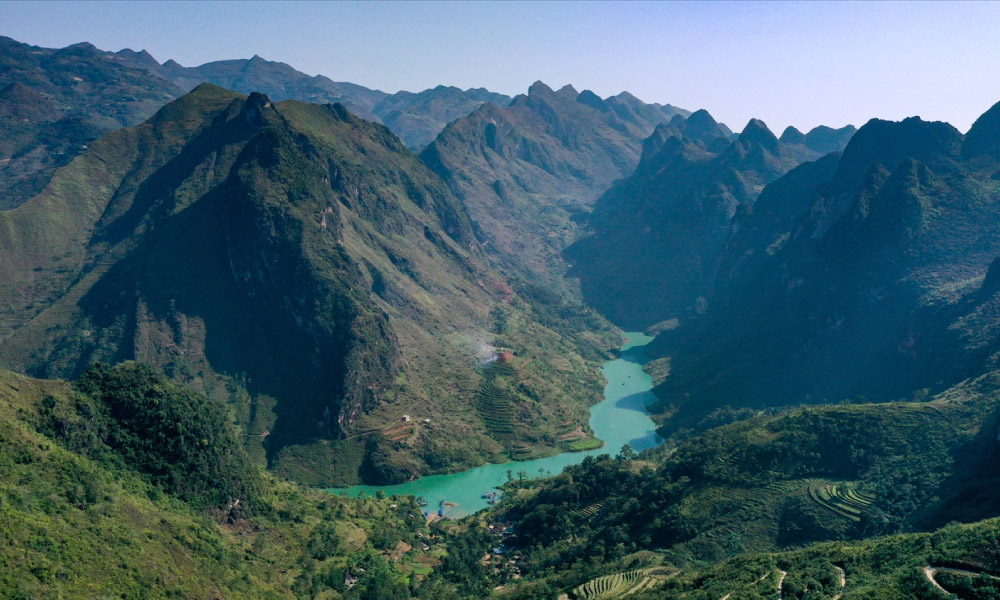
The river water remains a stunning jade color all year round, gently winding beneath the verdant mountains and forests of Ha Giang, creating a majestic natural picture that captivates the hearts of visitors from all over.
Whether you’re relaxing on a boat drifting down the river or sipping coffee from a high cliff overlooking its expanse, the Nho Que River offers the tranquility many seek after long, tiring days.
Marking Vietnam’s absolute northernmost point, the Lung Cu Flagpole is a sacred symbol, situated at the peak of Dragon Mountain at 1,470 meters above sea level.
First built in 1887, the Lung Cu Flagpole has undergone many restorations. Today, it features a distinctive octagonal base adorned with traditional Vietnamese carvings, reaching a height of more than 30 meters. From its 9-meter-high pole, a 54-square-meter Vietnamese national flag waves in the wind, representing the solidarity of Vietnam’s 54 ethnic groups.
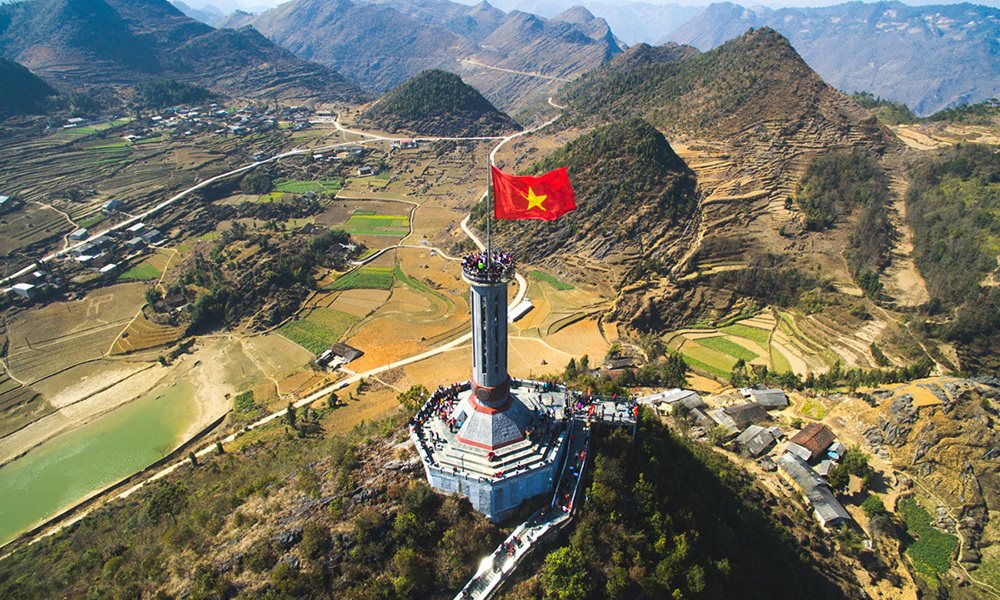
This site is not only an impressive architectural work but also carries historical and cultural significance, where visitors can listen to the heroic stories of the Ha Giang people.
The Dong Van Museum, situated at the regional information station, is your starting point to learn more about the history and culture of this rocky plateau.
Here, visitors can view archaeological, ethnological, geological, and historical artifacts from the area, gaining a deep understanding of the formation, development, and flourishing of ethnic minority life in Dong Van.
Pho Bang Town is a little-known district located near the Vietnam – China border, the home of the Mong and Chinese people. Time moves slowly here, giving it a simple, ancient charm that holds the steps of visitors from near and far.
In Pho Bang, you’ll experience the raw authenticity of highland life: ancient houses with moss-covered walls telling stories of generations, as villagers quietly go about their daily routines on the fields.
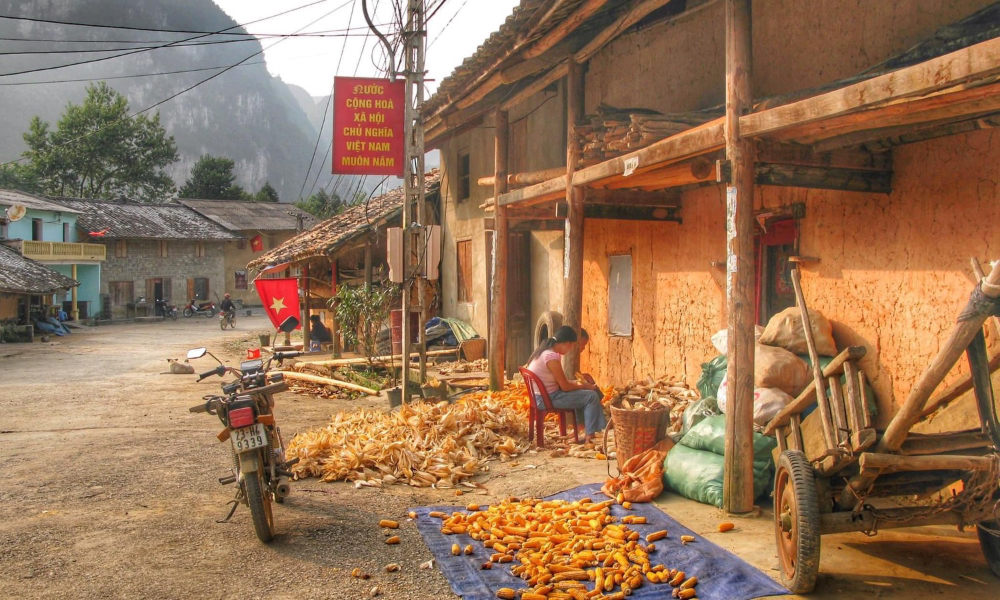
This slow life is colored by the vibrant blooms of spring: yellow canola, red roses, pink peaches, and white plum blossoms, all against the majestic Northeastern mountains. Just immerse yourself in nature and observe this simple town for a rare sense of tranquility.
Known as “the place where rocks bloom”, Sung La Valley offers a surreal natural beauty.
Head to the Pho Bang intersection near Dong Van Town for the best panoramic view: Sung La lies peacefully among the undulating, dark stone mountains, interspersed with unique rammed earth houses whose roofs have turned yellow over time.
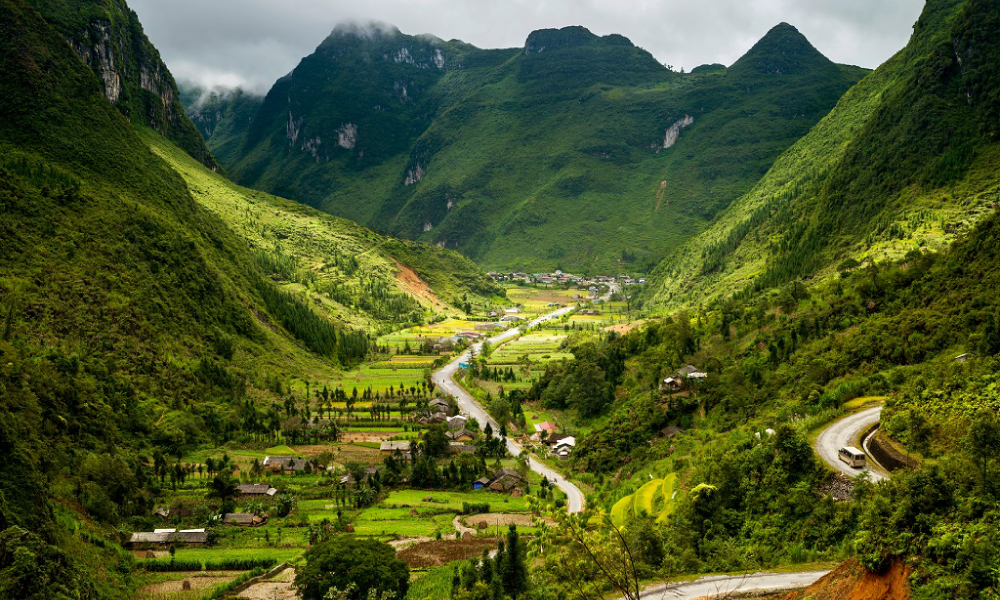
Every spring, Sung La Valley bursts into life with white plum and pear blossoms blooming like snow on the branches, enchanting visitors from near and far. However, the buckwheat flower season, every October to November, is particularly sought after by countless Dong Van travelers for its poetic beauty.
The market in Pho Cao Valley, 25 kilometers from Dong Van Town, is a vital trading and exchange hub for local ethnic minorities. Opening from early morning until afternoon, Pho Cao Market uniquely rotates its meeting day weekly to accommodate all locals’ schedules.
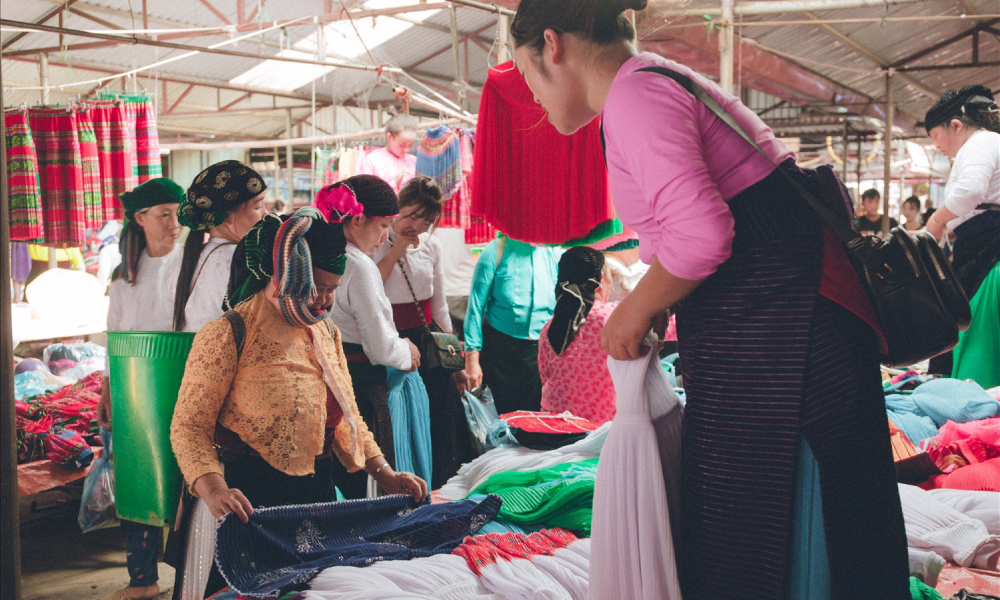
These markets are always vibrant: people in their finest clothing bring everything from livestock and textiles to fresh produce they’ve just harvested. The bustling, colorful scene at Pho Cao Market offers a simple yet precious glimpse into Ha Giang’s highland life, bringing memorable experiences to visitors every time they visit.
Yen Minh District in Ha Giang offers a serene beauty with vast pine forests, charming villages nestled at the foot of evergreen mountains, and the lovely Du Gia Waterfall, which warmly welcomes visitors every summer.
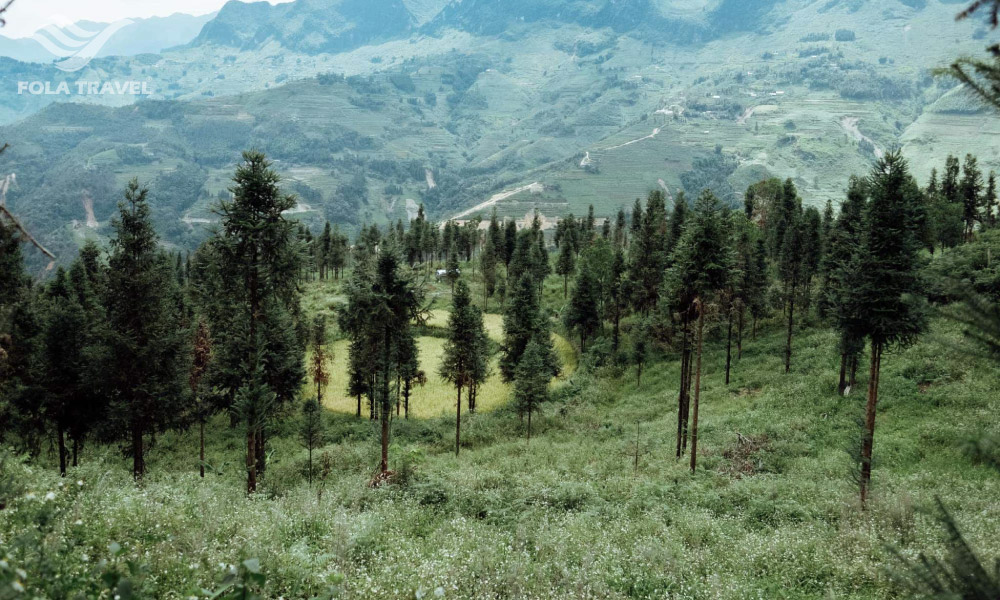
As the first gateway on the Happiness Road, Quan Ba greets visitors to Ha Giang with its sweeping, curved roads that hug the mountainside. From here, you can admire the breathtaking rolling hills and the sprawling village panorama below.
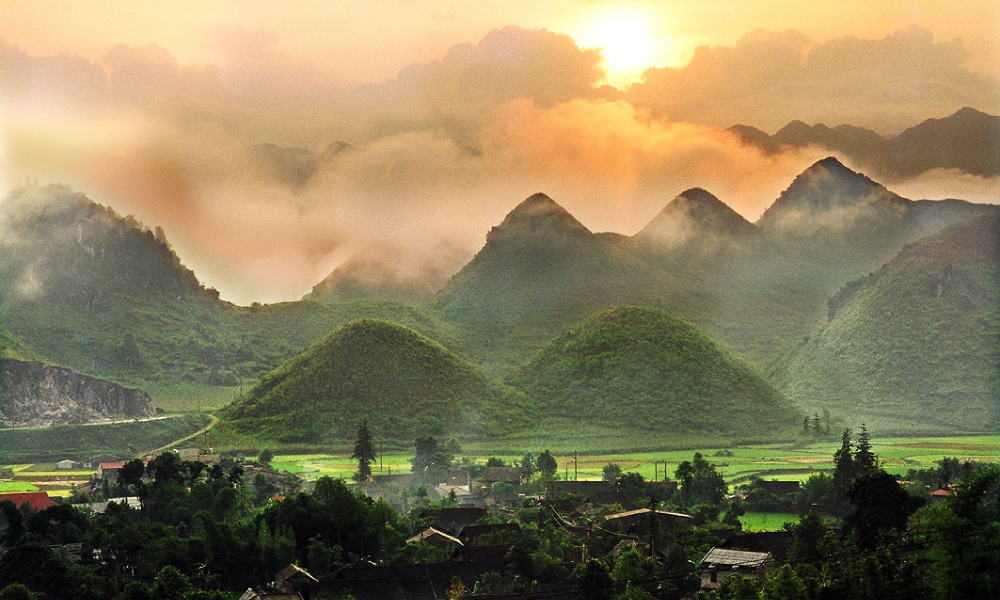
Meo Vac District, located right next to Dong Van, is a truly beautiful spot. It’s home to many rustic ethnic villages where you can dive into the culture and customs of the highland people.
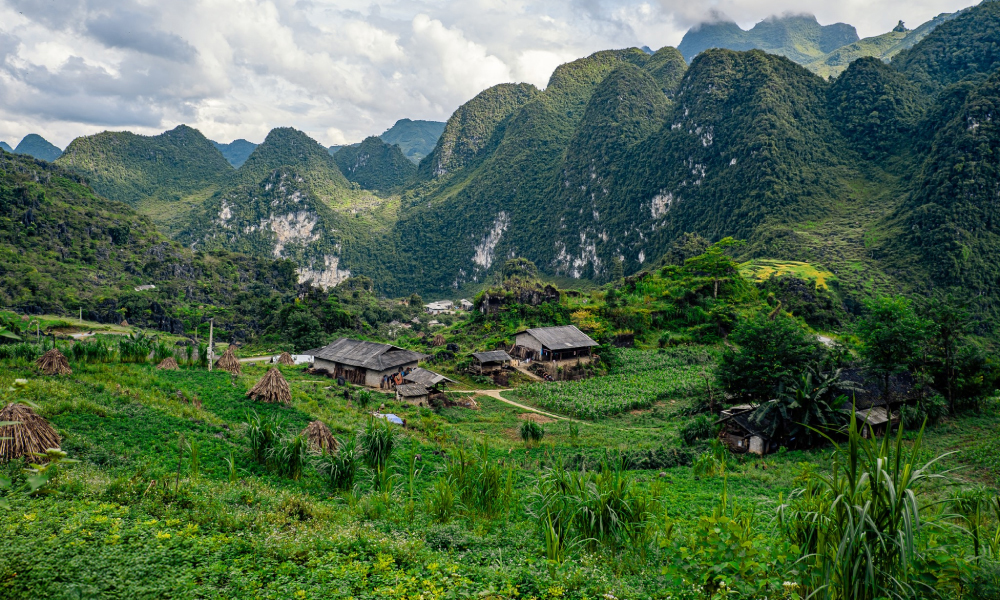
This also makes it an ideal stop on the Ha Giang Loop route, especially with the impressive Ma Pi Leng Pass looking out over the poetic Nho Que River.
SHARE YOUR OPINION